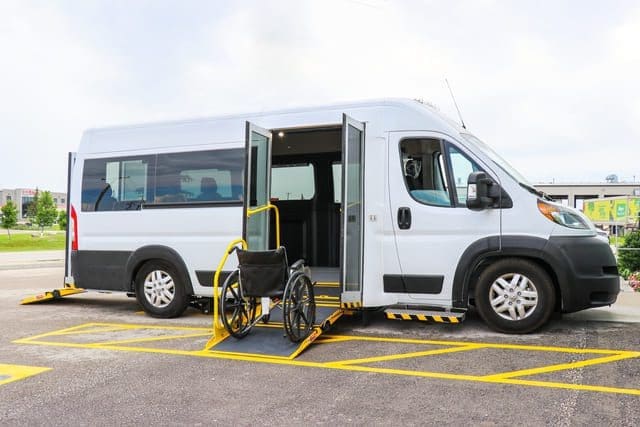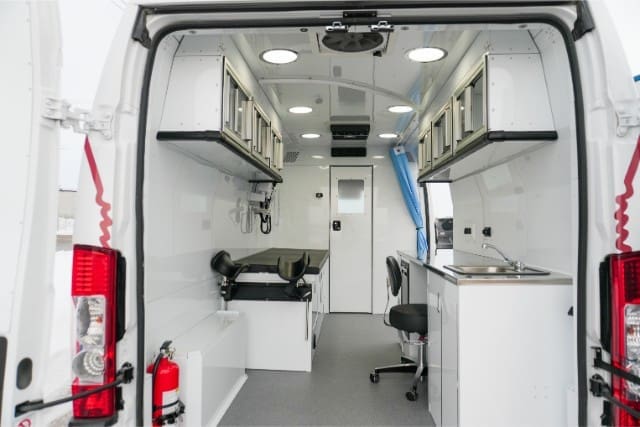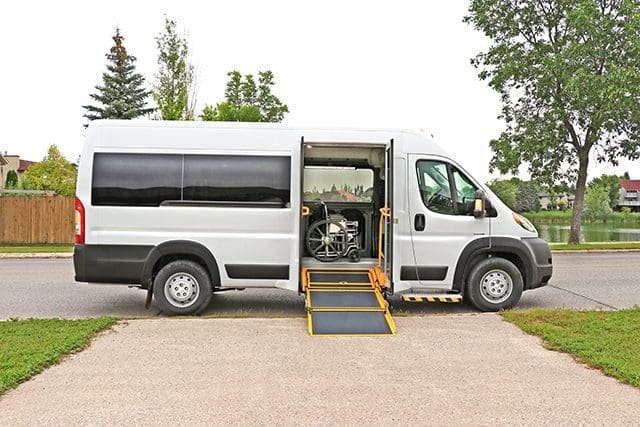Working with transport programs across the country, we understand the importance of safe, reliable, and inclusive public transportation options like community shuttle vans.
In major centers, there are multiple options for public transportation such as regional transit systems, on demand service providers, rideshare companies, and private transportation providers. This creates options for those who choose to use public transportation, and for those who rely on it as their only option.
Challenges of Operating Community Shuttles
Rural and remote communities face challenges implementing public transportation programs that urban centers do not. This is largely in part to the smaller population being unable to self-fund through user fares.
Coupling this with government funding programs often being based on the size of the population, it means that there are less resources available to implement and sustain community shuttle programs.
At MoveMobility, we understand these challenges. We work with communities to provide cost-effective community shuttle vehicles that come with a lower acquisition, fuel and maintenance costs. Our community shuttle vans do not need a specialized license to operate, which usually means a savings on labour costs.
These savings often make the difference in the ability to start and sustain a community shuttle program. During consultations with clients, we are often impressed with those who work tirelessly to ensure that the community shuttle service is available to those who rely on it. They often tell us that they are driven to do this work because they know how much the community shuttle means to those who rely on it.

Community Shuttle Van User Feedback
We were so inspired by our clients’ commitment to members of the communities that they serve, that we felt we would benefit from hearing firsthand what the community shuttle means to those who rely on it. In this spirit, we met with three users of community shuttles in different areas of the country to learn more.

Reliable Transportation in Rural Communities
First, we met with “Fern”, who lives in a small community in rural Manitoba. She has been using the community shuttle van since 2019, when she decided that she was no longer comfortable driving. Fern was happy to share her experiences with us:
Q. “What made you decide to begin using the community shuttle service?”
A. “I had already given up driving at night for a few years. Then, I started to find that I wasn’t comfortable driving in winter conditions, which can last half the year here in Manitoba. After thinking it through, it didn’t make sense for me to keep up the maintenance and insurance costs to have a vehicle that I would only use during daylight hours for only half the year.”
“What was holding me back was the one or two times per month that I needed to drive to the city for medical appointments or for leisure activities. I knew our Community Shuttle went into the city regularly.”
“I reached out to find out my options, and I was pleasantly surprised to learn that there would be no issue getting to the city basically as often as I required. I decided then to give my car to my grandson and give up driving for good.”
Q. ”Was it a difficult decision for you to give up driving?”
A. “No, not once I knew that I would be able to get where I needed to go. I was feeling less comfortable driving with every passing year. If I had to travel to the city when the highways weren’t good, it would stress me out and I wouldn’t feel safe.”
Q. “If it wasn’t for the community shuttle van, would you have been able to give up driving?”
A. “Probably not, or if I did, I would have had to find another way to the city with family or friends. I would really hate to ask that of them. It’s usually a half day or better for every trip. So I think I probably would have kept driving, but after this past winter, I can’t even imagine how stressful that would have been”.
Q. “In a few words, could you please share with us what the community shuttle service means to you?”
A. “It means so much to me so it’s hard to describe in a few words. I guess I would say that it has allowed me to remain independent after giving up something that I thought gave me independence.”

Maintaining Independence with a Community Shuttle
Next, we had the opportunity to connect with “Dale”, from a rural community in Alberta. Dale has a visual impairment and has relied on his community’s shuttle service ever since it has been available.
Q. “Would you please share with us where you travel to on the community shuttle?”
A. “My primary use of the shuttle is to get to and from work. I use it a minimum of twice a day, Monday through Friday, as well as to visit friends and family and to do errands or shopping. I’m pretty sure I am their best customer!”
Q. “How would you be affected if the community shuttle was no longer available to you?”
A. “That would be a nightmare. The shuttle is my lifeline because it allows me to be independent. I wouldn’t be able to live here, that’s for sure. I work in a neighbouring community, so I would either have to move there or find a job here.”
Q. “Can you tell us more about the independence that you are able to achieve by using the shuttle?”
A. “I don’t know where to begin. There are so many things. I used the shuttle to get to school, then it allowed me to accept my job in a neighbouring community. Neither would have been possible for me without it.”
“I like knowing that I can book a ride and get to where I want or need to go. It means I don’t have to rely on anybody else and that’s very important to me.”
Q. In a few words, can you tell us what the community shuttle means to you?
A. “I can tell you in one word: it means independence.”

Community Shuttle Options for Riders with Any Mobility Level
Our next stop was to meet with Jacquie. Jacquie has been using the community shuttle van in her rural southern Ontario community. As the result of an aggressive form of Multiple Sclerosis, she began using a wheelchair in 2014.
Q. “Can you share your experience with us, as someone starting to use a community shuttle for the first time?
A. “To be honest, I wasn’t very happy about it. Having always had my own vehicle, I took for granted that I could get from point A to point B. As my MS progressed, I think I was in denial. I was able to ride with my husband for a couple of years because he would help me in and out of his vehicle. “
“Every few months, I needed more help to get in and out and eventually he was having to completely lift me in and out. Then one day, he hurt his back lifting me into the car to go to an appointment. We needed another option fast, so my daughter contacted the community shuttle and set me up to join the program.”
“I reluctantly agreed for this one trip only. That was eight years ago, and I’m still using it.”
Q. “What made you decide to continue to use the shuttle when you were so opposed to it at the start?”
A. “I can’t deny that it made things easier for everyone. Being able to get in and out of the van in my wheelchair has made a huge difference. It caused pain to my husband and I to get me in and out of his car, whereas the shuttle is designed to carry wheelchairs. Now I feel silly that I was so against it in the beginning. So in hindsight, I should have started using it sooner.”
Q. “In a few words, could you share with us what the community shuttle means to you now?”
A. “It means that I don’t need to avoid doing things because I don’t want to go through the pain of getting in and out of the car. I used to avoid going places unless it was necessary because of the pain, and the difficulty my husband had helping me.
Impacts of Accessible Transportation in Our Communities
Hearing firsthand what having a community shuttle van means to each Fern, Dale and Jacquie was extremely powerful for us. It would be unimaginable for all of them if they didn’t have this valuable service to rely on. We really appreciated their time and candor as it has inspired us to continue to find ways to help communities ensure that their community shuttle programs are cost effective and sustainable.
If your community is considering implementing a wheelchair accessible transportation service, reach out to MoveMobility for help.








